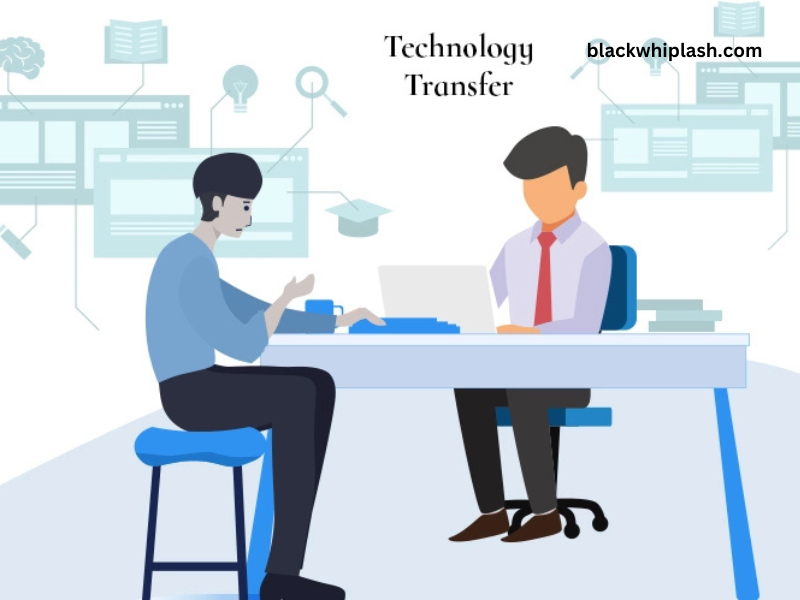In today’s fast-evolving world of science and technology, universities, research institutions, and companies consistently collaborate to drive innovative solutions and discoveries. At the heart of these collaborations stands the Technology Transfer Office (TTO), a specialized entity tasked with bridging the gap between research and practical application. This office is critical in transforming scientific knowledge and discoveries into real-world applications, serving as a bridge between academia and industry.
In this article, we will explore the main function of a Technology Transfer Office (TTO) with respect to collaborative research, delving into how TTOs foster partnerships, protect intellectual property, manage agreements, and ultimately advance innovations that benefit society.
Understanding the Role of the Technology Transfer Office
A Technology Transfer Office is typically a department within universities, research institutions, or innovation-driven organizations. Its primary mission is to commercialize research discoveries, facilitating the movement of knowledge, technology, and intellectual property (IP) to industries and other sectors where they can be utilized practically. TTOs play a crucial role in enhancing collaborative research by serving as the central point for managing agreements, navigating IP rights, and promoting innovation.
Why Collaborative Research Needs a Technology Transfer Office
Collaborative research involves partnerships between different entities such as universities, private companies, government agencies, and non-profit organizations. These partnerships are essential to combine diverse expertise, resources, and insights to accelerate scientific breakthroughs. However, navigating this environment is complex, with numerous stakeholders, interests, and legal considerations at play. TTOs offer valuable support in managing these challenges and ensuring that collaborative research remains fruitful and streamlined.
Main Functions of a Technology Transfer Office in Collaborative Research
The main functions of a Technology Transfer Office with respect to collaborative research include:
Facilitating Partnerships and Networking
One of the primary responsibilities of a TTO is to build and maintain connections between academia and industry. TTOs actively seek potential partners, both nationally and internationally, that can benefit from or contribute to specific research projects. By establishing and nurturing these networks, TTOs enable research institutions to access funding, resources, and expertise from external partners, enhancing the overall scope and impact of collaborative projects.
Intellectual Property (IP) Management
Intellectual Property management is crucial in collaborative research settings, as it determines ownership rights over discoveries and innovations. The TTO ensures that all parties involved in the research process understand their rights and obligations regarding IP. The TTO’s role in IP management includes:
Identifying and Protecting IP
TTOs assess whether discoveries made during research collaborations can be patented or otherwise protected. They facilitate the patenting process, safeguarding the innovation and securing exclusivity for potential commercialization.
Negotiating IP Ownership
In collaborative research, the question of who owns the resulting IP is essential. TTOs negotiate terms that reflect the contributions and interests of each partner, creating fair and transparent IP agreements.
Licensing and IP Transfer
Once the IP is established, TTOs facilitate licensing agreements that allow third parties to use the technology in exchange for royalties or other benefits, promoting technology transfer without compromising the rights of the creators.
Developing Research and Licensing Agreements
To formalize collaborations, TTOs are responsible for drafting and managing various agreements, which include:
Research Collaboration Agreements
These agreements outline the objectives, contributions, and responsibilities of each party in a collaborative research project. They clarify financial terms, timelines, and research goals, ensuring all parties are aligned in their expectations.
Material Transfer Agreements (MTAs)
When materials, such as biological samples or proprietary chemicals, need to be transferred between entities, TTOs draft MTAs to govern their use. These agreements define how the materials can be used, shared, or modified, protecting the originator’s interests.
Confidentiality Agreements (CDAs)
Also known as Non-Disclosure Agreements (NDAs), CDAs protect sensitive information shared between collaborators. TTOs enforce these agreements to ensure that confidential details of the research remain protected.
Ensuring Compliance with Regulatory Standards
Research, particularly in areas such as medicine, environmental science, and technology, is often subject to regulatory oversight. TTOs ensure that all collaborative research complies with relevant regulations and ethical standards. They guide research teams through regulatory approval processes and monitor compliance with laws governing clinical trials, data privacy, and more.
Funding and Grant Acquisition Support
Funding is a major challenge for research collaborations, and TTOs play an instrumental role in securing financial resources. They help research teams identify funding sources, from government grants to private-sector investments. TTOs also assist with grant application processes and often provide insights into writing competitive proposals that align with funders’ requirements.
Commercialization and Technology Marketing
TTOs are responsible for bringing innovations to the market. They assess the commercial potential of research outputs and take steps to attract industry interest. By promoting technology licensing, joint ventures, and spin-off companies, TTOs pave the way for academic discoveries to reach consumers, industries, and society at large. Some common activities in this process include:
Market Research and Feasibility Assessment
TTOs conduct market research to assess demand for the technology and determine its viability. This research guides decisions on whether to pursue patenting, licensing, or direct commercialization.
Attracting Industry Partners and Investors
Once a technology shows promise, TTOs work to attract potential industry partners and investors. This involves presenting the technology’s value proposition, demonstrating its relevance to industry needs, and promoting its competitive advantages.
Licensing Agreements
Through licensing, TTOs grant companies the right to use university-developed technology. This allows companies to bring innovations to market quickly, while research institutions benefit financially.
The Benefits of TTOs in Collaborative Research
With their multifaceted roles, TTOs provide invaluable support in collaborative research, leading to several benefits:
Accelerated Innovation
By facilitating partnerships and navigating regulatory processes, TTOs enable faster progress from research to application, ensuring that innovative solutions reach the market sooner.
Protection of Intellectual Property
Researchers and institutions often invest substantial time and resources into discoveries. TTOs protect these investments by managing IP rights effectively, preventing unauthorized use or exploitation.
Enhanced Funding Opportunities
TTOs help researchers secure financial support for their projects, connecting them with grant providers, investors, and corporate sponsors that align with the research objectives.
Economic and Social Impact
Through commercialization efforts, TTOs contribute to economic growth by bringing new technologies to market, creating jobs, and fostering the development of spin-off companies. These efforts also provide societal benefits as innovations in healthcare, technology, and environmental sustainability become widely accessible.
Reinforced Collaborative Ties
By creating structured, legally sound frameworks for collaboration, TTOs lay the foundation for long-term partnerships between academia, industry, and other organizations. This fosters a more collaborative research ecosystem, enhancing knowledge-sharing and cross-disciplinary cooperation.
Challenges Facing Technology Transfer Offices
While TTOs play a critical role in collaborative research, they also face several challenges that can hinder their effectiveness:
Complex IP Negotiations
Balancing the interests of multiple parties in IP ownership can be difficult. TTOs often navigate sensitive negotiations to ensure fair outcomes that respect each party’s contributions.
Resource Limitations
Smaller institutions may lack the resources to establish fully staffed TTOs, which can limit their ability to protect IP, secure funding, or manage commercialization efforts effectively.
Market Viability of Research
Not all research has immediate commercial potential. Determining the market viability of discoveries can be a lengthy and uncertain process, requiring careful assessment and risk-taking by TTOs.
Regulatory Hurdles
Compliance with regulatory standards, particularly in fields like medicine and environmental science, is essential but complex. TTOs must navigate these regulations carefully to avoid legal and ethical pitfalls.
The Future of Technology Transfer in Collaborative Research
As technology advances, the role of TTOs will continue to evolve to meet new challenges and opportunities in collaborative research. Some future trends that may shape the work of TTOs include:
Increased Focus on Global Partnerships
With research becoming increasingly globalized, TTOs may expand their efforts to foster international collaborations, addressing issues such as cross-border IP rights and regulatory compliance.
Growing Emphasis on Open Innovation
The open innovation model, which encourages collaboration and information-sharing across organizations, may become more prevalent. TTOs will play a vital role in navigating IP agreements, managing partnerships, and ensuring that open innovation practices are beneficial for all parties.
Digital Transformation and Data Sharing
Digital tools and data-sharing platforms are transforming the way research is conducted. TTOs will likely need to adapt to manage digital IP, data rights, and privacy regulations effectively in collaborative research settings.
Focus on Sustainability and Social Impact
With increasing emphasis on sustainable development goals, TTOs may prioritize collaborations that contribute to environmental and social objectives, fostering partnerships with organizations dedicated to positive global change.
Conclusion
Technology Transfer Offices are integral to the success of collaborative research, enabling research institutions and industries to work together toward shared goals. By managing IP rights, facilitating partnerships, navigating regulatory challenges, and driving commercialization, TTOs help bring scientific discoveries to life, ultimately creating economic and societal benefits. In a world where innovation and collaboration are key to progress, TTOs stand as essential enablers of impactful research, bridging the gap between theory and application for a better future.


